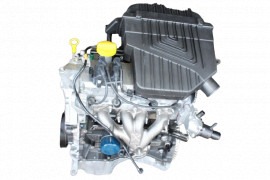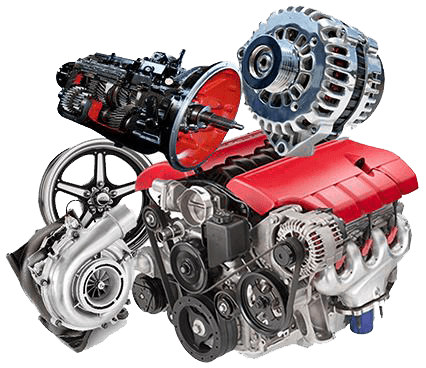Budget-friendly Opel Corsa Engine Options for Your Budget
Budget-friendly Opel Corsa Engine Options for Your Budget
Blog Article
Checking Out the Inner Operation of a Compact Car's Engine System
As motorists, we commonly take for provided the elaborate procedures that occur within the confines of our car's engine system. In this expedition of a portable vehicle's engine system, we will certainly unwind the inner workings of this mechanical symphony, dropping light on the enigmas that drive us forward on our daily trips.
Combustion Process Summary
The burning process in a portable car's engine system is a vital mechanism that successfully converts gas into power to power the vehicle. This process takes place within the burning chamber of the engine, where gas and air mix, stir up, and generate controlled explosions. The burning process contains four primary phases: intake, exhaust, compression, and power.
Throughout the consumption stage, the piston moves downward, attracting a mixture of air and fuel into the combustion chamber. The following phase, compression, entails the piston moving upwards, compressing the air-fuel mix to increase its effectiveness. Ultimately, in the power stage, the ignition system stirs up the compressed combination, resulting in a rapid development of gases that forces the piston back down. This downward activity generates the power required to drive the car. Lastly, in the exhaust phase, the burned gases are gotten rid of from the burning chamber with the exhaust valve, preparing the chamber for the following cycle. This cyclic combustion process is basic to the procedure of a compact automobile's engine system, ensuring efficient power conversion for propulsion.
Piston and Cylinder Communication

The piston's exact fit within the cylinder is necessary for maintaining optimal compression and protecting against energy loss during combustion. Limited clearances in between the piston and cylinder walls ensure reliable securing, enabling the piston to move efficiently without enabling gases to leakage past. Proper lubrication is likewise essential to decrease rubbing and use between these elements, boosting durability and efficiency.
Furthermore, the style and products used in making the piston and cyndrical tube effect engine effectiveness and toughness. Modern engines usually utilize light-weight yet sturdy materials like light weight aluminum alloys for pistons and cyndrical tube liners to minimize inertia and improve thermal efficiency. Generally, the harmonious interaction in between the piston and cyndrical tube is fundamental to the engine's performance and total performance.
Gas Shot System Capability
Fuel shot systems in portable car engines play a vital role in specifically delivering fuel to the combustion chamber for regulated and reliable ignition. The gas injection system operates by infusing fuel into the combustion chamber at the ideal moment throughout the engine's operation (opel corsa engine). This exact timing guarantees that the gas blends evenly with the air for correct combustion, resulting in enhanced gas performance and reduced exhausts
There are largely 2 kinds of fuel injection systems used in portable lorry engines: port fuel shot (PFI) and direct fuel shot (DFI) PFI systems inject gas right into the consumption port prior to the intake valve, while DFI systems infuse fuel straight right into the combustion chamber. Both systems have their advantages, with DFI offering better fuel atomization and PFI providing an extra cost-efficient solution.
Understanding Engine Air Conditioning Systems
Reliable procedure of a small lorry's engine depends heavily on the effectiveness of its cooling systems. Engine air conditioning is vital to stop getting too hot, which can bring about major Click This Link damage and decreased performance. The air conditioning system in a compact vehicle normally includes a number of parts interacting to control the engine temperature. One crucial component is the radiator, which utilizes coolant to take in warmth from the engine. As the hot coolant streams through the radiator, it launches heat right into the air, cooling down prior to going back to the engine. The water pump distributes the coolant via the engine and radiator, ensuring a regular flow to control temperature. Additionally, the thermostat assists regulate the coolant flow to preserve optimum engine temperature. Some vehicles likewise have cooling fans that turn on when extra air conditioning is needed, such as throughout heavy traffic or hot climate. Recognizing these engine air conditioning devices is important for maintaining the performance and durability of a small automobile's engine system.

Exhaust System Parts Explained
The optimal functioning of a compact car's engine air conditioning systems depends on a corresponding system understood as the exhaust system, which comprises various important elements for ensuring reliable discharges and engine efficiency. The exhaust manifold gathers exhaust gases from the engine's paths and cylinders them to the catalytic converter.
One vital component of the exhaust system is the oxygen sensing unit, which checks the oxygen degrees in the exhaust gases to assist regulate gas usage and guarantee ideal engine performance. opel corsa engine. Furthermore, the resonator may be existing in some exhaust systems to reduce sound levels. In general, the exhaust system plays a crucial function in maintaining engine effectiveness, decreasing unsafe discharges, and making certain a quieter driving experience for portable car owners

Conclusion
Finally, the compact car's engine system he said is an intricate combination of components that interact to promote the combustion procedure, convert fuel into power, and get rid of waste gases. Recognizing the click this link inner functions of the engine system, including the piston and cylinder interaction, fuel shot system, engine cooling systems, and exhaust system components, is crucial for keeping optimal performance and efficiency of the car.
The combustion procedure in a compact vehicle's engine system is an essential system that successfully converts fuel into power to power the automobile.Gas injection systems in compact automobile engines play an essential duty in precisely supplying gas to the burning chamber for efficient and regulated ignition.There are mostly 2 kinds of fuel shot systems used in portable vehicle engines: port gas shot (PFI) and straight fuel shot (DFI) Comprehending these engine air conditioning mechanisms is important for maintaining the efficiency and durability of a small vehicle's engine system.
The optimum functioning of a compact automobile's engine cooling systems depends on a complementary system understood as the exhaust system, which consists of different important components for guaranteeing efficient discharges and engine performance.
Report this page